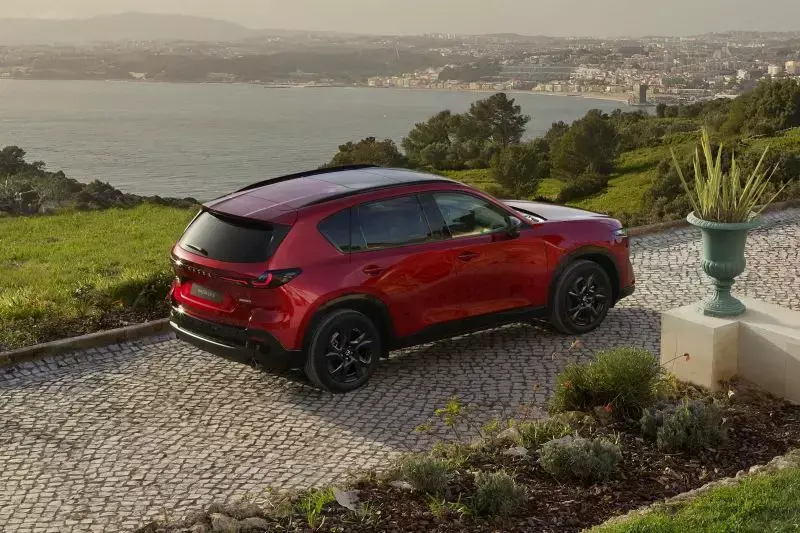2026 Mazda CX-5 Debuts with Updated Look, Same Engine

The third-generation Mazda CX-5 has been announced, and it will arrive in Australia in 2026, with a recognizable yet more modern look on the inside and exterior, as well as a familiar engine under the hood.
According to CarExpert, the new CX-5 will hit the market in the second half of 2026.
It will be launched with a carryover naturally aspirated 2.5-litre four-cylinder engine delivering 132kW of power and 242Nm of torque, the same engine that will be used in North America.
The vehicle comes equipped with a six-speed automatic transmission and all-wheel drive, which is initially standard.
Unfortunately, the powerful 170kW/420Nm 2.5-litre turbo-petrol engine has been discontinued globally.
Mazda Australia has confirmed that we will acquire the first hybrid CX-5, providing the Japanese company a competitor to the best-selling Toyota RAV4 Hybrid.
The timing for the CX-5 Hybrid, which will feature Mazda's new Skyactiv-Z engine and an in-house hybrid system, has yet to be confirmed; it will be revealed later.
However, Mazda North America has announced that it will be available in 2027.
Mazda Australia describes the carryover four-cylinder engine as "proven" and "reliable," adding that it has been recalibrated for increased flexibility, responsiveness, and a "more relaxed, quiet demeanour."
However, it lost 8kW and 10Nm throughout the process. Nonetheless, it is more powerful than the 2.5-litre 'eSkyactiv-G' engine that will power the CX-5 in Europe, which generates 104kW and 238Nm but has a 24V mild-hybrid system.
The new CX-5 is 4690mm long, 1860mm wide, and 1695mm high, which is 115mm longer and 15mm broader than the previous model.
It also has a 115mm longer wheelbase (2815mm) and still uses MacPherson strut front and multi-link rear suspension.
The door openings are bigger for simpler access, rear-seat passenger room is said to have been enhanced, and the cargo area is over 50mm longer with an 18mm lower load height.
The exterior appearance immediately distinguishes the new-generation model as a CX-5.
The silhouette is familiar, but the front and back have finer detailing. The CX-5 retains thin headlamps and a crest-shaped grille, but Mazda claims it has a "more chiselled, wider-set look" up front.
Down back, more angular taillights align the CX-5 with recently announced Mazda SUVs such as the CX-70 and CX-90.
The interior is arguably more different from the outgoing vehicle than the outside.
Inside, there's a large landscape-oriented infotainment touchscreen that resembles Mazda's new electric 6e. However, the CX-5 is even larger at 15.6 inches, making it Mazda's largest yet and significantly more spacious than the previous model's 10.25-inch unit.
The outgoing CX-5 had a minimalist center stack, but it still had physical climate controls. Those are almost all gone, with the majority appearing to be moored at the bottom of the touchscreen; however, physical switches for the demister remain.
The infotainment screen also includes a customizable home screen, which allows users rapid access to frequently used features.
A fully digital instrument cluster, similar to that used in Mazda's larger SUVs, can be seen in European-market photos, while the revised steering wheel has replaced Mazda's emblem with a wordmark.
Ambient lighting is offered, and Mazda has shown off both tan and two-tone grey/black interior color schemes, as well as a panoramic sunroof that replaces the outgoing model's antiquated single-pane one.
The gear lever and start button appear to be the only inside pieces that have been carried over.
Mazda has promised "several" new ADAS (advanced driver assistance system) functions, but has not revealed which. However, images show a driver attention monitoring device in the cabin.
Mazda Australia has assured a steady supply of the current CX-5 ahead of the new model's local arrival.
The first CX-5 went into production in 2012, and Mazda's mid-size SUV has been a major seller in Australia, with over 316,000 shipped since launch, and more than 4.5 million internationally across over 100 countries.
From 2013 until 2019, it was Australia's best-selling SUV, with sales peaking at 27,062 in 2022.
Despite being surpassed in sales by the Toyota RAV4, it has continually been among the top three best-selling vehicles in its segment for the past 13 years.
The CX-5 has accomplished this without offering any sort of electrification, at least in Australia, even though hybrid powertrains have swiftly expanded throughout the mid-size SUV sector in recent years.
While the outgoing CX-5 (shown below) has a mild-hybrid powertrain in Europe, it hasn't made its way here, and Mazda hasn't had a hybrid to compete with rivals like the RAV4 or a plug-in hybrid to compete with rivals like the Mitsubishi Outlander.
The new CX-5 will face battle against rivals such as a new-generation RAV4 (expected next year), a new Subaru Forester (coming soon), and a redesigned Outlander (available now), as well as internal rivalry from the similarly sized CX-60.
Mazda Australia is expanding the CX-60 lineup downward, adding a new base Pure grade this year and announcing the familiar naturally aspirated 2.5-litre four-cylinder engine as the new base engine.
The CX-60 2.5-litre will be available later this year, with a basic price lower than the G40e Pure's $50,240 before on-road sticker.
For comparison, the outgoing CX-5 range is priced starting at $36,740 before on-roads for the front-wheel drive 2.0-litre G20 Maxx and topping out at $55,150 before on-roads for the turbocharged all-wheel drive G35 Akera.